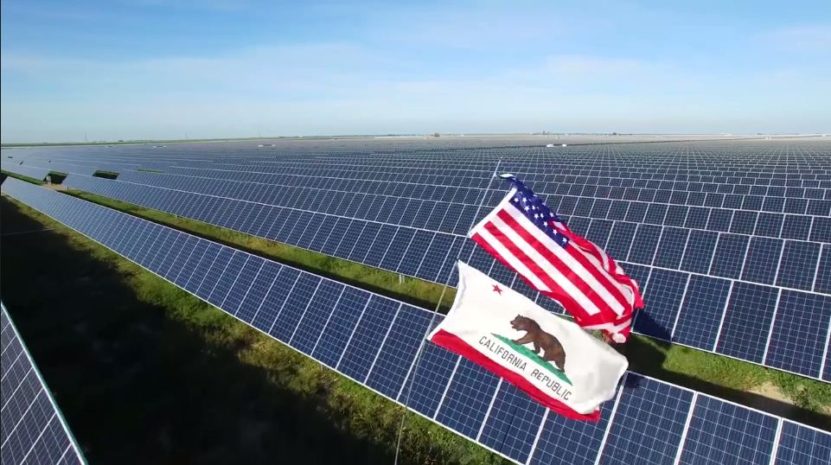By Camron Barati, IHS Markit
 Already the leading solar state, California is following its ambition to attain a renewable power standard of 50% by 2030. On May 9th, the California Energy Commission (CEC) voted to approve measures associated with California’s Building Energy Efficiency Standards that require solar to be incorporated with all new residential homes in the state from January 1, 2020. Once adopted by the California Building Standards Commission by the end of 2018, the policy will spur demand for solar in the new-build home market in California. Assuming recent annual residential home build rates are maintained through 2020, IHS Markit estimates this policy could increase demand for solar PV in California by up to 600 MW per year, assuming current residential housing construction rates in California hold steady past 2020.
Already the leading solar state, California is following its ambition to attain a renewable power standard of 50% by 2030. On May 9th, the California Energy Commission (CEC) voted to approve measures associated with California’s Building Energy Efficiency Standards that require solar to be incorporated with all new residential homes in the state from January 1, 2020. Once adopted by the California Building Standards Commission by the end of 2018, the policy will spur demand for solar in the new-build home market in California. Assuming recent annual residential home build rates are maintained through 2020, IHS Markit estimates this policy could increase demand for solar PV in California by up to 600 MW per year, assuming current residential housing construction rates in California hold steady past 2020.
Whether this potential will be reached will obviously depend on how builders and owners interpret the standards, and on any exceptions that will be allowed. One of the main concerns expressed by the building industry is the increase in construction costs, which will be passed on to the owner or tenant. The end-user will need to be convinced of the energy savings that the new home will bring.

In addition to promoting PV, the policy will also encourage the adoption of battery storage for new home construction. Policy makers in California see storage as a key element for optimizing consumption of renewable generation and creating new value streams for utilities and end users via grid services such as demand response programs and virtual power plant aggregation. This new regulation will expand the competitive landscape as suppliers will seek new strategic partnerships with home builders. Now we will see whether other states will follow suit to match California’s ambition for residential PV, or if they prefer to wait and observe the real impact of the new standards.
New Jersey
A few weeks after the vote to modify California’s building standards, on the other coast, Governor Phil Murphy made New Jersey the fifth state to adopt an energy storage target, by signing law A3723/S2314. The bill is also set to increase New Jersey’s renewable portfolio standard to 35% by 2025 and 50% by 2030. Such ambitions lift the state into the category of leading clean energy states, alongside New York, California, and Hawaii. The bill represents another milestone for the energy storage industry in the United States, creating further momentum across the East Coast following Massachusetts and New York. The New Jersey target is set at 2 GW of energy storage to be deployed by 2030 with an interim target of 600 MW by 2021. As a first step, New Jersey’s Board of Public Utilities, in consultation with PJM Interconnection, will be required to consult with stakeholders to conduct an analysis and submit a report evaluating storage needs and opportunities in the state. Six months after completion, mechanisms will be designed to achieve the 2021 and 2030 storage targets.
IHS Markit expects the targets to significantly boost storage and renewable power deployment across the East Coast state. The largest opportunity will lie in the integration of distributed generation and behind-the-meter storage. The new legislation creates a wider positive environment for solar by increasing the behind-the-meter solar target from 4% by 2028 to 5% by 2021, proposing an orderly end to the current solar renewable energy credit (SREC) trading program after 2021, and setting forth plans to determine the next generation of solar incentives that will continue to support the industry. Such policy modifications will positively impact demand for solar in the near-term by increasing the value of SRECs and make solar more economically attractive for customers. Prior to the policy update, SREC values were plummeting due to market saturation.
Before cheering on these steps to boost the renewable power sector, it should be noted that the package of legislation included the controversial bill S2313, which approves a zero-emissions certificate program, which could provide $300 million annual subsidy for the remaining nuclear power plants in New Jersey. Such financial assistance will be available for four years, without any specific end date stated in the current bill. According to legislators, the support aims to maintain base-load power as renewable power generation expands its role in the generation mix.
California and New Jersey are two states that have stepped up their renewable power and storage ambitions this spring. New targets and long-term plans set the ground for strong deployment of solar and storage, often in combination, also beyond the expiry of the ITC.
About the author:
Camron Barati is a Senior Analyst with IHS Markit Technology. Camron is part of the IHS Markit Technology Solar and Energy Storage Group and responsible for researching solar PV and energy storage markets in North America, covering supply chain trends and downstream market dynamics. He is based in Austin, TX.
Prior to joining IHS Markit, Camron worked as an associate with GTM Research as part of their solar analyst team. He also has experience working with the National Renewable Energy Laboratory and Enphase Energy. Camron graduated from Texas State University with a BSc in Geography.
The views and opinions expressed in this article are the author’s own, and do not necessarily reflect those held by pv magazine.
This content is protected by copyright and may not be reused. If you want to cooperate with us and would like to reuse some of our content, please contact: editors@pv-magazine.com.








By submitting this form you agree to pv magazine using your data for the purposes of publishing your comment.
Your personal data will only be disclosed or otherwise transmitted to third parties for the purposes of spam filtering or if this is necessary for technical maintenance of the website. Any other transfer to third parties will not take place unless this is justified on the basis of applicable data protection regulations or if pv magazine is legally obliged to do so.
You may revoke this consent at any time with effect for the future, in which case your personal data will be deleted immediately. Otherwise, your data will be deleted if pv magazine has processed your request or the purpose of data storage is fulfilled.
Further information on data privacy can be found in our Data Protection Policy.